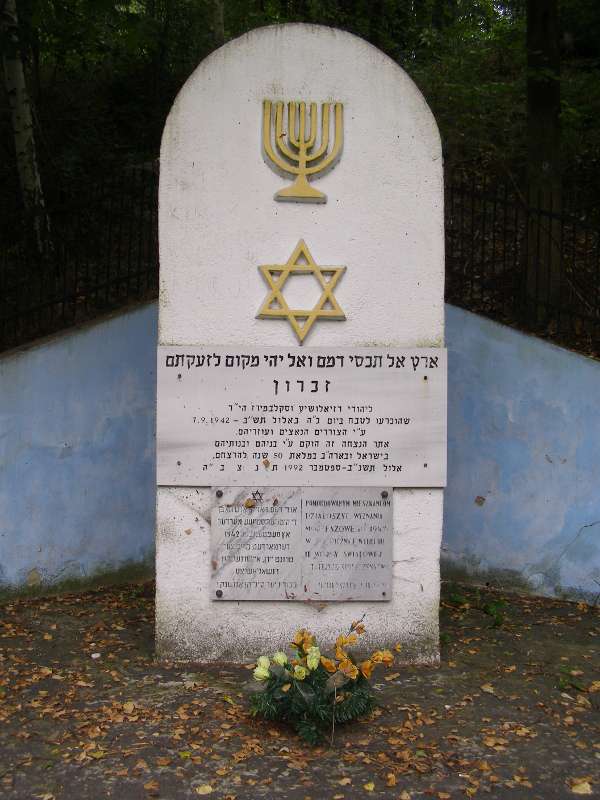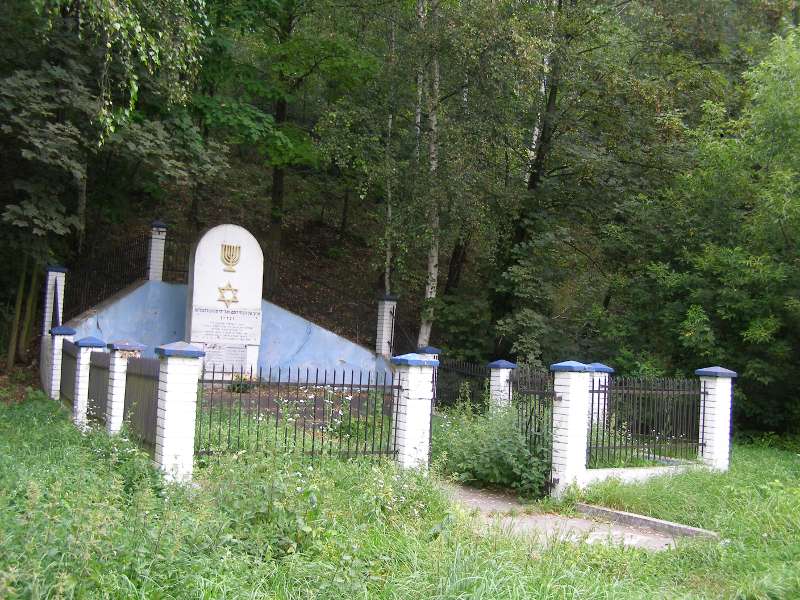 Alternate names: Działoszyce [Pol], Zaloshitz [Yid], Dzyaloshitse [Rus], Dzialoshitz, Zalazhtsy, Zaleshits, Zaloshits, Salshits, Russian: Дзялошице. דזיאלושיץ- Hebrew. 50°22' N, 20°21' E, 27 miles NE of Kraków, 35 miles SSW of Kielce in Świętokrzyskie Voivodeship. Gmina Działoszyce is an urban-rural administrative district in Pińczów County, Świętokrzyskie Voivodeship in south-central Poland with its seat as the town of Działoszyce. 1900 Jewish population: 3,526 ; 1921 Jewish population: 5,618 people or 83.6%; and 1939: 7,000 Jews (70%).
Alternate names: Działoszyce [Pol], Zaloshitz [Yid], Dzyaloshitse [Rus], Dzialoshitz, Zalazhtsy, Zaleshits, Zaloshits, Salshits, Russian: Дзялошице. דזיאלושיץ- Hebrew. 50°22' N, 20°21' E, 27 miles NE of Kraków, 35 miles SSW of Kielce in Świętokrzyskie Voivodeship. Gmina Działoszyce is an urban-rural administrative district in Pińczów County, Świętokrzyskie Voivodeship in south-central Poland with its seat as the town of Działoszyce. 1900 Jewish population: 3,526 ; 1921 Jewish population: 5,618 people or 83.6%; and 1939: 7,000 Jews (70%).
Yizkor: Sefer yizkor shel kehilat Dzialoszyce ve-ha-seviva (Tel Aviv, 1973).
Yizkor: Town information and translation ordering information. The book is available at Amazon and other distributors for a discounted price of about $43.00. List price is $58.95. [January 2013]
1,117 inhabitants in 2004 and 1,068 in 2006. Gmina Działoszyce contains the villages and settlements of Biedrzykowice, Bronocice, Bronów, Chmielów, Dębiany, Dębowiec, Dziekanowice, Dzierążnia, Dziewięczyce, Gaik, Iżykowice, Jakubowice, Januszowice, Jastrzębniki, Ksawerów, Kujawki, Kwaszyn, Lipówka, Marianów, Niewiatrowice, Opatkowice, Pierocice, Podrózie, Sancygniów, Stępocice, Sudół, Świerczyna, Sypów, Szczotkowice, Szyszczyce, Teodorów, Wola Knyszyńska, Wolica, Wymysłów, Zagaje Dębiańskie and Zagórze. Large neo-classical synagogue ruin photo [April 2009]
MASS GRAVE:
The Jewish community of 1,500 were murdered on September 3, 1942. Some sources say 2,000 were murdered that day and thrown into mass graves near the Jewish cemetery. About 8,000 people were taken to Belzec. [April 2009]
CEMETERY:
The cemetery is located on the left side of the dirt road prolonging the Skalbmierza Street.A memorial with two tombstones is enclosed by a wall with a fence and an open door. The enclosed area is about a square of 10 by 10 meters long. The memorial includes a plaque in polish and yiddish posed in 1989 and a newer plaque from September 1992 written in Hebrew to commemorate 50 years after the massacre of the Jews of Dzialoszyce and nearby Skalbmierz on September 7, 1942. A tomb holds the names of Chil Dawid Salomon and Tauba Salomon Spiwak. I was unable to locate any other grave around. Source: This email address is being protected from spambots. You need JavaScript enabled to view it., Jerusalem [August 2009]
Video: Dzialoszyce, led by its Mayor and the Mayor of nearby Chmielnik, honor the Jews who lived here before the Holocaust June 17, 2006. Jewish history. "Jews were first allowed to settle in Dzialoszyce during the reign of Casimir the Great in the middle of the 14th century. The Jewish population thrived, with most being involved in crafts and commerce. Originally, the town was part of Krakow Province, but was annexed to Pinczow district after the Partition of Poland. By 1820, there were 1692 people living in Dzialoszyce and about 75% were Jews. In 1921, the population was 6765 and was about 83% Jewish." Source. [April 2009]
CEMETERY:
US Commission No. POCE000286
Located on Skalbmierska Str, in Kielce region at 50º22N 20º19 E, 31 km. from Jedrzejow. Present town population is 1000-5000 with no Jews.
- Town: Burmistoz Miasta Dziatoszyce, 28-540 Dziatoczyce, Kozciusik 1, Tel# 5.
- Local: Wojewodzki Konservataor Zabythos at IX Wielcoj Kielc, 3, 25-955 Kielce Tel# 45634.
Earliest known Jewish community was 1707. 1921 Jewish population was 5618. The cemetery was established in the 18th century with last known Orthodox or Conservative Jewish burial 1942. The isolated suburban crown of a hill is reached by turning directly off a public road. It is open to all with no wall, fence or gate. It was and still is about 2 hectares in size. There are no stones or structures in this cemetery since it was vandalized during WWII. Municipality owns site. Properties adjacent are agricultural. This cemetery is visited rarely and has no maintenance.
Dr. Adam Penkalla, who may have more information, visited the site at Gagarina 9, ul. 26, 26-600 Radourz, Tel# 48 - 366 35 34 and completed this survey. He used his own documentation.
REFERENCE: Ruth Ellen. Jewish Heritage Travel: A Guide to East-Central Europe . New York: John Wiley & Sons, Inc., 1992. p. 44-45. "Synagogue ruins"
Photos courtesy This email address is being protected from spambots. You need JavaScript enabled to view it.
Photos by Charles Burns [Februry 2016]


